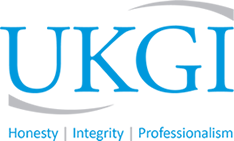Context
Nikhil Rathi, the FCA CEO, has published his second Business Plan, which has perhaps been overshadowed by the publication alongside it of a 3-year strategy document, “Our Strategy 2022-2025” (Our Strategy 2022 to 2025 (fca.org.uk)). Within the strategy document the FCA has moved away from its previous sector approach, with more of a focus on results and the outcomes it expects all firms to deliver across markets. The ‘more innovative, more assertive, more adaptive’ message continues to be included in the FCA’s publications.
This Strategy, and the Business Plan, appear to be high-level, although the Strategy does reference improving the oversight of Appointed Representatives.
The strategy document says that, currently, the biggest cause of consumer harm is the online space (scams, investments, and crypto issues). There is very little mention of or reference to insurance in the documents, with only brief reference to “… remedies to improve competition and protect home and motor insurance customers from loyalty penalties…” (insurance pricing) and “…making better use of digital listening tools to identify problems faster, like small businesses struggling to make business interruption insurance claims…” (business interruption insurance).
Key points to note
- The headline in the related press release talks about resources focused on outcomes to prevent serious harm, and highlights that 80 new roles are to be created to shut down problem firms (FCA launches three-year strategy to improve outcomes | FCA).
- Turning to the detail of the strategy there are no new themes; in the main the details are set out in what is becoming a new, familiar format and language. The FCA says it is going to focus on 3 key areas, each of which have a number of commitments associated with them:
- Reducing and preventing serious harm
- Setting and testing higher standards
- Promoting competition and positive change
- In terms of outcomes for consumers that the FCA is looking for, these are:
- Fair Value: Consumers receive fair prices and quality
- Suitability and Treatment: Consumers are sold suitable products and services and receive good treatment
- Confidence: Consumers have strong confidence and levels of participation in markets, in particular through minimised harm when firms fail and minimised financial crime
- Access: Diverse consumer needs are met through high operational resilience and low exclusion
Next actions
None – for information and awareness

